The growing popularity of meal prep reflects the modern need for efficient solutions to busy lifestyles while maintaining nutritional goals. More people are discovering that dedicating a few hours each week to meal preparation ideas can transform their relationship with food, providing significant time savings, cost reduction, and improved nutrition outcomes.
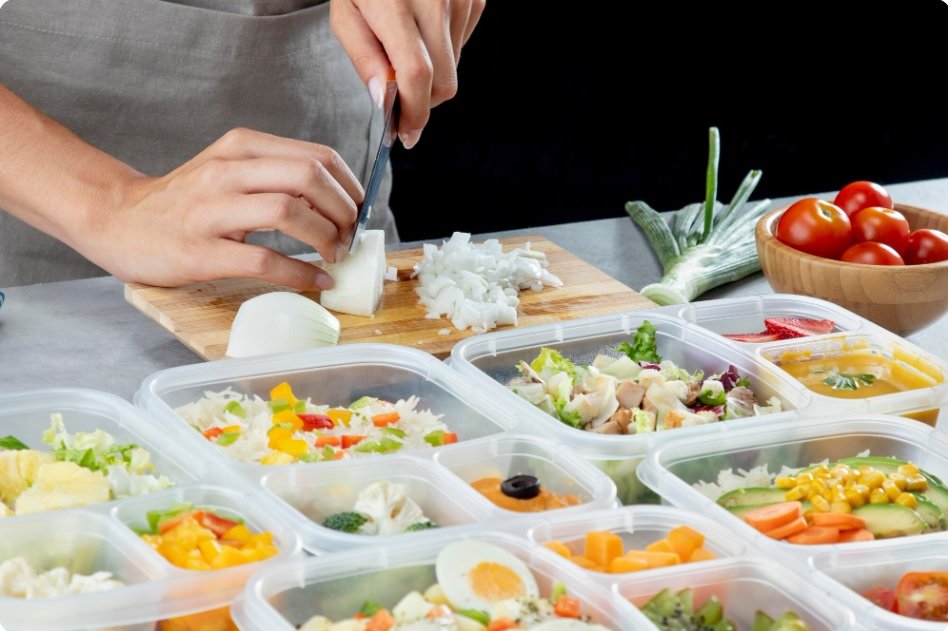
Easy meal prep ideas offer practical solutions for individuals seeking to maintain a balanced healthy diet without spending hours in the kitchen each day. The benefits extend beyond convenience, encompassing better portion control, reduced food waste, and the ability to make intentional choices about ingredients and nutrition.
Common misconceptions about meal prep often center around the belief that it requires extensive culinary skills or results in boring, repetitive meals. In reality, successful meal prep ideas focus on creating flexible systems that accommodate varying schedules, preferences, and nutritional needs while maintaining flavor and variety.
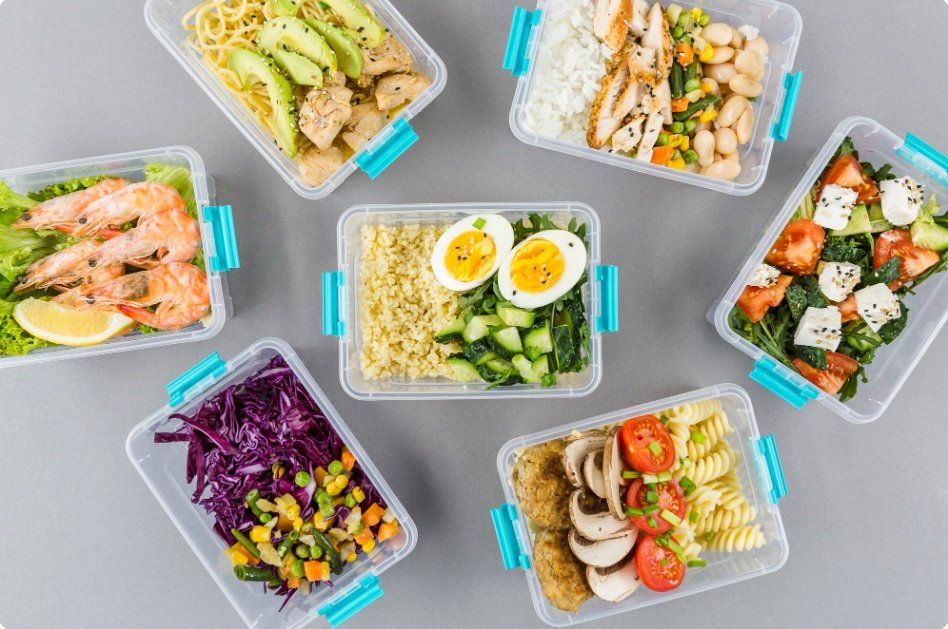
What makes meal prep truly “easy” and sustainable is developing systems that work with individual lifestyles rather than against them, emphasizing efficiency and enjoyment over perfection.
Meal Prep Fundamentals
Macronutrient Basics
Creating a balanced healthy diet through meal prep requires understanding the three primary macronutrients: proteins, carbohydrates, and healthy fats. Each healthy meal should incorporate all three macronutrients to promote satiety, stable blood sugar, and optimal energy levels throughout the day.
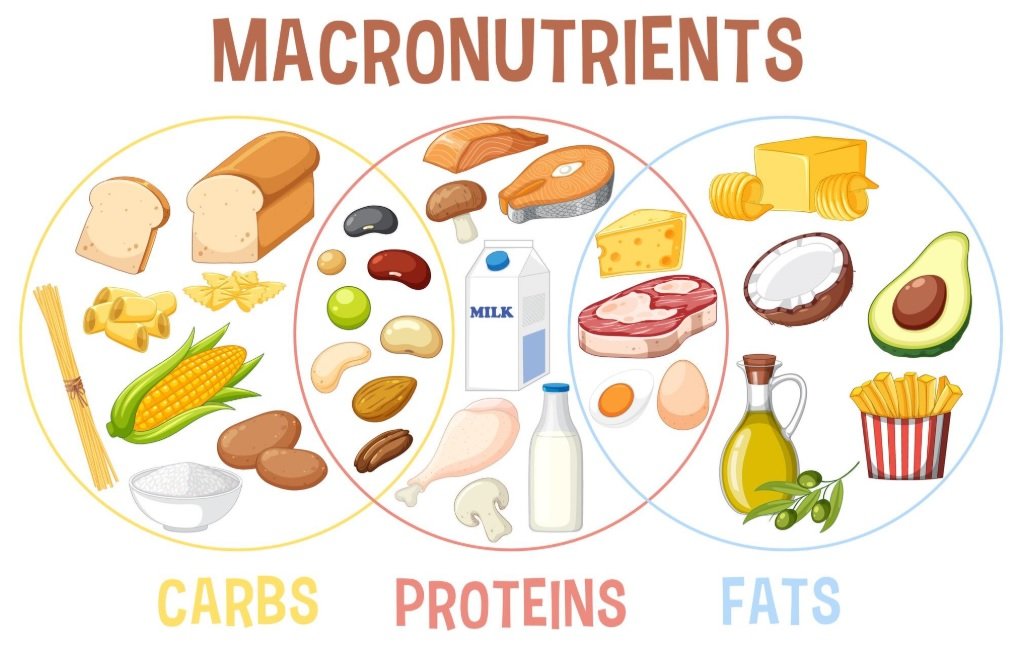
High protein snacks and high protein meal prep options provide essential amino acids for muscle maintenance and metabolic function. Quality protein sources include lean meats, fish, eggs, legumes, and plant-based alternatives that can be prepared in large batches for the week.
Healthy carbs from whole grains, fruits, and vegetables provide sustained energy and fiber, supporting digestive health and blood sugar stability. Incorporating complex carbohydrates into meal prep recipes helps create satisfying meals that sustain energy levels between eating occasions.
Healthy fat foods such as avocados, nuts, seeds, and olive oil support hormone production, vitamin absorption, and cellular function. Including appropriate amounts of healthy fats in meal prep meals enhances flavor and promotes satiety.
Micronutrient Considerations
Healthy food choices extend beyond macronutrients to include essential vitamins and minerals that support optimal body function. Meal prep ideas should incorporate a variety of colorful fruits and vegetables to ensure adequate micronutrient intake throughout the week.
Heart healthy foods rich in potassium, magnesium, and antioxidants support cardiovascular health and can be easily incorporated into meal prep recipes. Examples include leafy greens, berries, tomatoes, and fatty fish.
Portion Control Guidelines
Effective meal prep incorporates appropriate serving sizes to support individual health goals, whether focused on meal plan for weight loss, maintenance, or muscle building. Using consistent container sizes helps establish portion awareness and prevents overconsumption.
Low calorie meals can be created through strategic ingredient selection and portion control while maintaining nutritional density and satisfaction. Emphasizing vegetables, lean proteins, and moderate portions of whole grains creates balanced, satisfying meals.
Essential Equipment and Tools
Container Considerations
Successful meal prep relies heavily on appropriate storage containers that maintain food quality and safety throughout the week. Glass containers offer superior durability and reheating properties, while BPA-free plastic options provide lightweight convenience for portability.
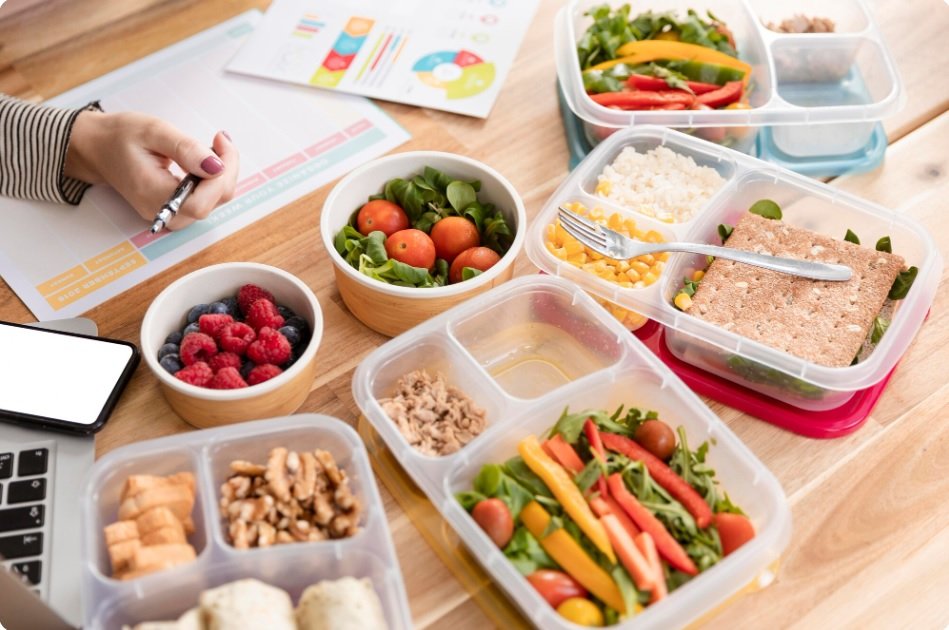
Container sizes should align with portion goals and meal types. Compartmentalized containers work well for healthy meal prep recipes that include multiple components, while single-compartment containers suit soups, stews, and one-pot meals.
Basic Kitchen Tools
Efficient food prep requires minimal specialized equipment beyond standard kitchen tools. Sharp knives, cutting boards, measuring cups, and basic cookware enable most meal prep recipes. Slow cookers and pressure cookers can significantly reduce active cooking time for large batches.
Storage and Labeling
Organized storage systems prevent confusion and reduce food waste. Labeling containers with contents and preparation dates helps maintain food safety and ensures proper rotation of prepared meal components.
Food Safety and Storage
Refrigeration and Cooling
Prepared meal delivery services demonstrate that proper cooling and storage techniques are crucial for food safety. Home meal prep should follow similar protocols, cooling foods quickly and maintaining appropriate refrigerator temperatures.
Food prepared meals should be cooled to room temperature before refrigeration to prevent temperature fluctuations that could compromise other stored foods. Large batches may need to be divided into smaller containers to facilitate rapid cooling.
Freezer-Friendly Options
Many meal prep recipes can be adapted for freezer storage, extending the convenience and reducing weekly prep time. Easy meal prep often incorporates freezer components that can be thawed and reheated as needed.
Understanding which ingredients freeze well and which should be added fresh helps optimize meal prep meal ideas for both immediate consumption and longer-term storage.
Meal Prep Strategies and Approaches
Batch Cooking Method
The batch cooking approach involves preparing large quantities of individual components that can be mixed and matched throughout the week. This method provides maximum flexibility while minimizing cooking time and cleanup.

Food prep ideas using the batch cooking method might include preparing several pounds of grilled chicken, roasted vegetables, and cooked grains that can be combined in different ways for varied healthy meals for dinner and lunch options.
This approach works particularly well for individuals with varying schedules or those who prefer different meal combinations throughout the week. The flexibility prevents meal fatigue while maintaining the convenience of prepared food.
Complete Meal Prep
Complete meal prep involves preparing entire meals in individual containers, ready to reheat and consume. This approach provides maximum convenience and portion control, making it ideal for busy professionals or those focused on specific nutritional goals.
Healthy meal prep ideas using this method ensure consistent nutrition and eliminate decision-making during busy periods. Each container represents a complete balanced diet meal, reducing the temptation to make less nutritious choices.
Hybrid Approach
The hybrid method combines elements of batch cooking with fresh components, providing convenience while maintaining variety and optimal food quality. This approach recognizes that some ingredients are best prepared fresh while others benefit from advance preparation.
Easy food prep using the hybrid method might involve preparing protein and grain components in advance while adding fresh vegetables, herbs, and dressings at serving time. This maintains optimal texture and flavor while providing meal prep convenience.
Easy Breakfast Meal Prep Ideas
1. Overnight Oats Variations
Basic Formula and Preparation
Overnight oats represent one of the most versatile breakfast meal prep ideas, requiring no cooking and providing endless customization options. The basic formula combines rolled oats with liquid (milk or non-dairy alternatives), allowing the oats to soften overnight while absorbing flavors.
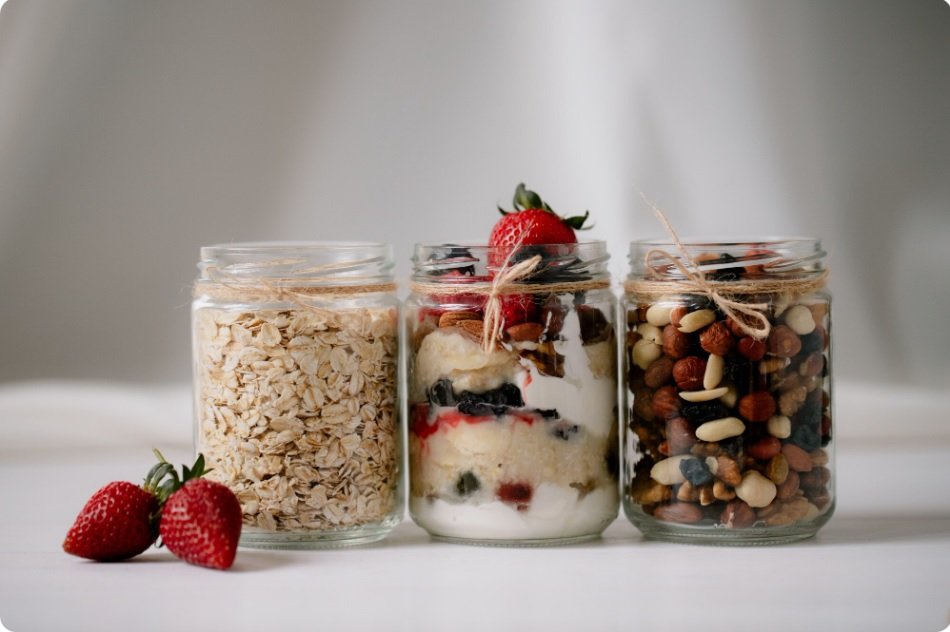
Healthy meal prep breakfast options should provide balanced nutrition to sustain energy throughout the morning. Overnight oats naturally provide complex carbohydrates and fiber, with opportunities to add protein and healthy fats.
Flavor combinations
Creating variety in overnight oats prevents breakfast boredom while maintaining the convenience of meal prep. Berry combinations provide antioxidants and natural sweetness, while chocolate variations can incorporate cocoa powder and healthy sweet snacks elements like dark chocolate chips.
Tropical variations might include coconut, mango, and pineapple for a refreshing change. Each variation can be prepared in multiple containers for several days of easy breakfast options.
Protein-Boosting Additions
High protein snacks and breakfast options support muscle maintenance and promote satiety. Overnight oats can be enhanced with Greek yogurt, protein powder, nuts, seeds, or nut butters to increase protein content.
Healthy protein snacks integrated into breakfast help maintain stable blood sugar and energy levels throughout the morning, reducing mid-morning hunger and the temptation for less nutritious snacks.
2. Egg-Based Prep Options
Hard-Boiled Eggs
Easy meal prep often includes hard-boiled eggs as a versatile protein source that can be incorporated into various meals and healthy snacks. Preparing a dozen eggs at once provides protein options for several days.
Hard-boiled eggs can be enjoyed on their own, added to salads, or incorporated into healthy snacks for weight loss by pairing with vegetables or whole grain crackers.
Breakfast Egg Muffins
Egg muffins provide a convenient way to incorporate vegetables and create portable breakfast prep options. These can be made in large batches and frozen for longer storage, providing quick reheating options for busy mornings.
Vegetable combinations might include spinach, peppers, onions, and tomatoes, creating nutrient-dense healthy meal prep options that support daily vegetable intake goals.
Freezer Storage and Reheating
Breakfast prep ideas often benefit from freezer storage capabilities, allowing individuals to prepare larger batches less frequently. Proper wrapping and storage techniques maintain quality during freezer storage.
3. Make-Ahead Smoothie Packs
Pre-Portioned Ingredients
Healthy meal prep can extend to beverages through pre-portioned smoothie ingredients stored in freezer bags. This approach eliminates morning prep time while ensuring consistent nutrition and flavor.
Each smoothie pack might include fruits, vegetables (such as spinach or kale), and portion-controlled add-ins. When ready to consume, the contents are simply added to liquid and blended.
Protein Integration
Incorporating protein powder or other protein sources into smoothie packs creates high protein snacks and meal replacement options. Healthy protein snacks in liquid form can be particularly convenient for busy mornings or post-workout nutrition.
4. Breakfast Bowl Components
Yogurt Parfait Systems
Healthy meal prep ideas can include preparing components for yogurt parfaits that are assembled fresh each morning. This approach maintains optimal texture while providing convenience.
Preparing granola, chopped fruits, and portioning yogurt creates assembly-line efficiency for morning meals. Greek yogurt provides high protein content, supporting healthy eating goals.
Lunch Meal Prep Solutions
5. Grain Bowl Master Template
Base Grain Options
Lunch meal prep ideas often center around versatile grain bowls that can be customized with various proteins and vegetables. Preparing large batches of quinoa, brown rice, or farro provides the foundation for multiple meals throughout the week.
Healthy meal prep recipes using grain bowls offer complete nutrition while accommodating various dietary preferences and restrictions. The grain base provides complex carbohydrates and fiber, supporting sustained energy levels.
Protein Rotation System
High protein meal prep involves preparing several protein options that can be rotated throughout the week to prevent meal fatigue. Grilled chicken, baked tofu, hard-boiled eggs, and legumes provide diverse protein sources.
Meal prep ideas high protein focus on incorporating 20-30 grams of protein per meal to support muscle maintenance and satiety. This approach helps maintain stable blood sugar and reduces afternoon hunger.
Seasonal Vegetable Combinations
Healthy food prep ideas incorporate seasonal vegetables to maintain variety and optimal nutrition. Roasted vegetables can be prepared in large batches and combined with different proteins and grains throughout the week.
Heart healthy foods like leafy greens, bell peppers, and tomatoes provide essential nutrients while adding color and flavor to grain bowl combinations.
6. Soup and Stew Preparations
Batch Cooking Hearty Soups
Easy meal prep meals often include soups and stews that can be prepared in large quantities and portioned for individual meals. These options typically improve in flavor over time, making them ideal for meal prep.
Low calorie meals can be created through vegetable-based soups that provide high nutrition density while supporting weight management goals. Bean and lentil soups offer protein and fiber in satisfying combinations.
Freezer-Friendly Recipes
Many soup recipes adapt well to freezer storage, extending the convenience of meal prep beyond a single week. Food prep meals that can be frozen provide backup options for particularly busy periods.
7. Salad Prep Without Wilting
Layering Techniques
Lunch meal prep recipes for salads require specific techniques to prevent wilting and maintain optimal texture throughout the week. Jar salads use strategic layering to keep delicate ingredients separated from moisture.
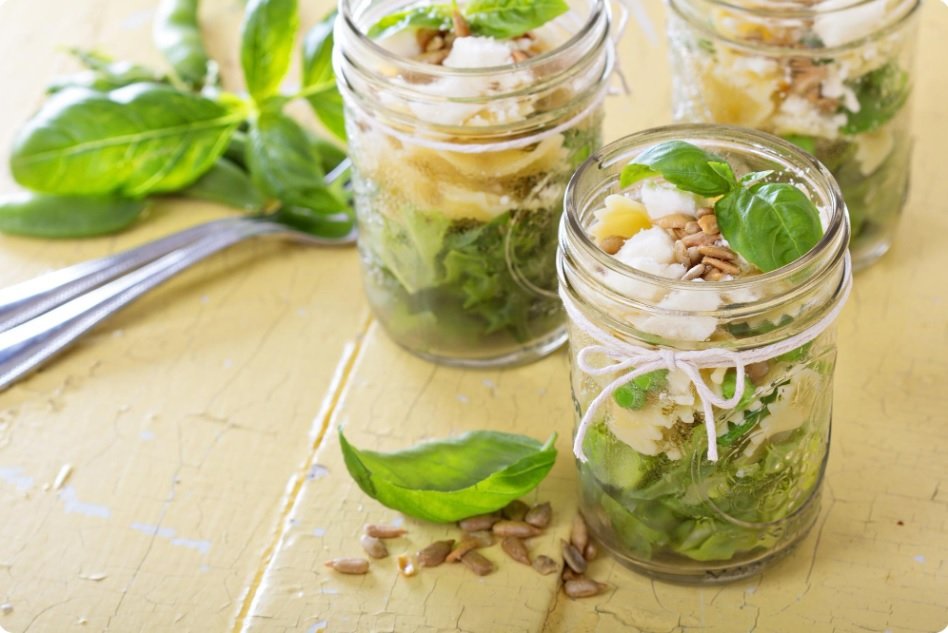
The bottom layer typically includes dressing, followed by hardy vegetables, proteins, grains, and finally delicate greens at the top. This technique maintains freshness for several days when properly stored.
Hardy Greens Selection
Healthy meal prep salads benefit from using sturdy greens like kale, cabbage, or romaine lettuce that maintain texture better than delicate options. These greens can withstand longer storage periods while maintaining nutritional value.
8. Sandwich and Wrap Systems
Make-Ahead Components
Easy lunch ideas for work often include sandwiches and wraps that can be partially prepared in advance. Preparing proteins, chopped vegetables, and spreads separately allows for quick assembly while preventing sogginess.
Lunch prep recipes for sandwiches focus on ingredient selection and storage techniques that maintain quality throughout the week. Some components benefit from separate storage until serving time.
Dinner Meal Prep Options
9. One-Pan Sheet Meal Concepts
Protein and Vegetable Combinations
Healthy meals for dinner can be efficiently prepared using sheet pan cooking methods that minimize cleanup while maximizing flavor. This approach allows for large batch preparation of complete meals.
Heart healthy meals using sheet pan techniques might combine salmon with roasted vegetables, providing omega-3 fatty acids and essential nutrients in a single preparation method.
Seasoning Variations
Food prep recipes for sheet pan meals benefit from varied seasoning combinations to prevent monotony. Mediterranean, Asian, and Mexican-inspired seasoning blends create different flavor profiles using similar base ingredients.
10. Slow Cooker and Instant Pot Meals
Set-and-Forget Preparations
Easy meal prep often incorporates slow cooker methods that require minimal active cooking time. These appliances excel at preparing tough cuts of meat and legume-based dishes that benefit from long, slow cooking.
Meal prep meals for weight loss can be created using lean proteins and vegetables in slow cooker preparations, emphasizing low-calorie, high-nutrition combinations.
Freezer Dump Bag Recipes
Food prep meals can be enhanced through freezer dump bag preparations, where all ingredients are combined in freezer bags and stored until needed. This method provides maximum convenience with minimal daily effort.
11. Stir-Fry Component Prep
Pre-Cut Vegetable Storage
Healthy food prep for stir-fries involves washing, cutting, and properly storing vegetables to maintain quality throughout the week. Proper storage techniques prevent deterioration while enabling quick cooking.
Easy food prep meals using stir-fry techniques provide flexibility in combining proteins and vegetables based on availability and preferences.
12. Freezer-Friendly Casseroles
Make-Ahead Assembly
Meal prep recipes for casseroles can be assembled in advance and frozen until needed. This approach provides complete meals with minimal daily preparation requirements.
Healthy meal prep recipes for casseroles focus on incorporating vegetables, lean proteins, and whole grains while managing calorie density and portion sizes.
Snack and Side Dish Prep
13. Vegetable Prep and Storage
Fresh Vegetable Preparation
Healthy snacks often center around fresh vegetables that have been washed, cut, and properly stored for easy access throughout the week. This preparation removes barriers to choosing nutritious options.
Healthy food prep ideas for vegetables include preparing raw options like carrots, celery, and bell peppers alongside cooked options like roasted sweet potatoes or steamed broccoli.
Roasted Vegetable Batches
Easy food prep includes preparing large batches of roasted vegetables that can be incorporated into various meals throughout the week. Roasting enhances flavor while maintaining nutritional value.
14. Protein Snack Preparations
Energy Balls and Protein Bites
High protein snacks can be prepared in advance through energy balls that combine nuts, seeds, and protein powder into convenient, portable options. These provide sustained energy between meals.
Healthy snacks for weight loss benefit from portion-controlled protein options that support satiety without excessive calories. Homemade options allow for ingredient control and customization.
Weekly Meal Prep Planning
Menu Planning Strategies
Schedule Assessment
Successful meal prep begins with assessing weekly schedules and commitments to determine realistic preparation and consumption goals. Understanding when meals will be consumed helps inform preparation methods.
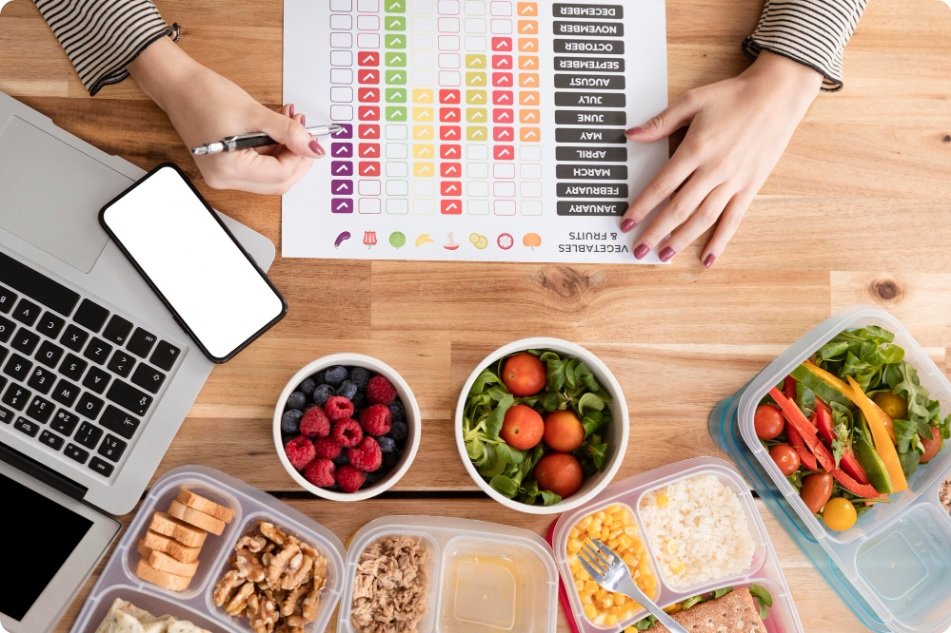
Easy meal prep ideas should align with individual schedules and preferences rather than following rigid systems that don’t accommodate real-life circumstances.
Variety and Efficiency Balance
Meal prep meal ideas should balance the desire for variety with the efficiency that makes meal prep sustainable. Too much variety can become overwhelming, while too little leads to boredom and abandonment.
Shopping List Organization
Strategic Shopping
Healthy meal prep requires strategic shopping that considers storage capacity, preparation time, and ingredient versatility. Organizing shopping lists by store sections improves efficiency and reduces forgotten items.
Food prep ideas benefit from buying ingredients that can be used in multiple recipes, reducing waste and maximizing convenience.
Prep Day Execution
Time Management
Easy meal prep execution requires realistic time management and task sequencing to maintain efficiency and prevent overwhelming preparation sessions. Breaking tasks into manageable segments helps maintain consistency.
Simple meal prep focuses on techniques and recipes that can be completed efficiently while maintaining quality and nutrition standards.
Customization for Different Dietary Needs
Plant-Based Meal Prep
Complete Protein Combinations
Vegan meal prep requires attention to complete protein combinations to ensure adequate amino acid intake. Combining legumes with grains or incorporating quinoa and other complete plant proteins supports nutritional needs.
Healthy eating through plant-based meal prep can provide all essential nutrients while supporting environmental and ethical goals.
Gluten-Free Adaptations
Meal prep ideas can be adapted for gluten-free requirements through careful ingredient selection and cross-contamination prevention. Many naturally gluten-free whole foods work well in meal prep systems.
Low-Carb and Keto Options
High-Fat Preparations
Low calorie meals can be adapted for low-carb approaches by emphasizing vegetables, proteins, and healthy fats while reducing grain and starchy vegetable content.
Meal prep for weight loss using low-carb approaches focuses on satiety through protein and fat while maintaining vegetable intake for micronutrients.
Troubleshooting Common Meal Prep Challenges
Avoiding Meal Prep Burnout
Rotation Systems
Healthy meal prep ideas should include rotation systems that prevent boredom and maintain long-term adherence. Seasonal ingredient changes and periodic recipe updates help maintain interest.
Easy meal prep sustainability depends on finding systems that feel manageable rather than burdensome, emphasizing progress over perfection.
Texture and Flavor Preservation
Reheating Techniques
Prepared meal quality depends heavily on proper reheating techniques that restore optimal texture and temperature. Different foods require different reheating approaches for best results.
Meal prep recipes should consider how ingredients will respond to reheating and storage, selecting combinations that maintain quality throughout the week.
Building Sustainable Meal Prep Habits
Starting Small and Scaling Up
Gradual Implementation
Easy meal prep adoption works best when starting with one meal category and gradually expanding based on success and confidence. Beginning with breakfast or lunch prep often provides manageable entry points.

Healthy meal prep habits develop over time through consistent practice and gradual refinement of techniques and preferences.
Adapting to Life Changes
Meal prep systems should be flexible enough to accommodate changing schedules, preferences, and life circumstances. Rigid systems often fail when circumstances change.
Food prep meals can be adapted for different family sizes, dietary restrictions, and seasonal ingredient availability while maintaining core principles of efficiency and nutrition.
Conclusion
Easy meal prep ideas for maintaining a balanced healthy diet provide practical solutions for modern lifestyle challenges while supporting optimal nutrition. The key principles include starting with manageable systems, focusing on nutrient-dense ingredients, and maintaining flexibility to prevent burnout.
Healthy meal prep offers benefits beyond convenience, including cost savings, reduced food waste, and improved dietary consistency. These advantages support long-term health goals while accommodating busy schedules.
Successful meal prep requires experimentation and personalization to find systems that work with individual preferences, schedules, and nutritional needs. The investment in developing effective meal preparation ideas pays dividends in improved nutrition, time savings, and reduced decision fatigue.

Balanced healthy diet maintenance becomes more achievable through strategic meal prep that removes barriers to nutritious eating while providing convenient, satisfying meal options throughout the week.
Quick Reference Resources
Weekly Meal Prep Timeline Template
Sunday: Shopping and major prep session Monday-Tuesday: Fresh component additions Wednesday: Mid-week prep refresh if needed Thursday-Friday: Use remaining prepped components Saturday: Plan next week’s menu
Essential Grocery Staples Checklist
Proteins: Chicken, fish, eggs, beans, Greek yogurt Grains: Brown rice, quinoa, oats Vegetables: Leafy greens, bell peppers, onions, carrots Healthy Fats: Olive oil, avocados, nuts, seeds Seasonings: Herbs, spices, vinegars
Container and Storage Guide
Glass containers: Best for reheating, durable, stain-resistant Plastic containers: Lightweight, portable, budget-friendly Freezer bags: Space-efficient for freezer storage Mason jars: Ideal for salads, overnight oats, soups
Emergency Quick Meal Ideas
When meal prep plans fall through, having emergency options prevents reliance on less nutritious choices:
- Healthy snacks combinations
- Quick healthy dinner using pantry staples
- Easy prepared meals from freezer reserves
- Simple protein and vegetable combinations requiring minimal preparation
These backup options maintain healthy eating consistency even during disrupted weeks, supporting long-term balanced diet goals.

